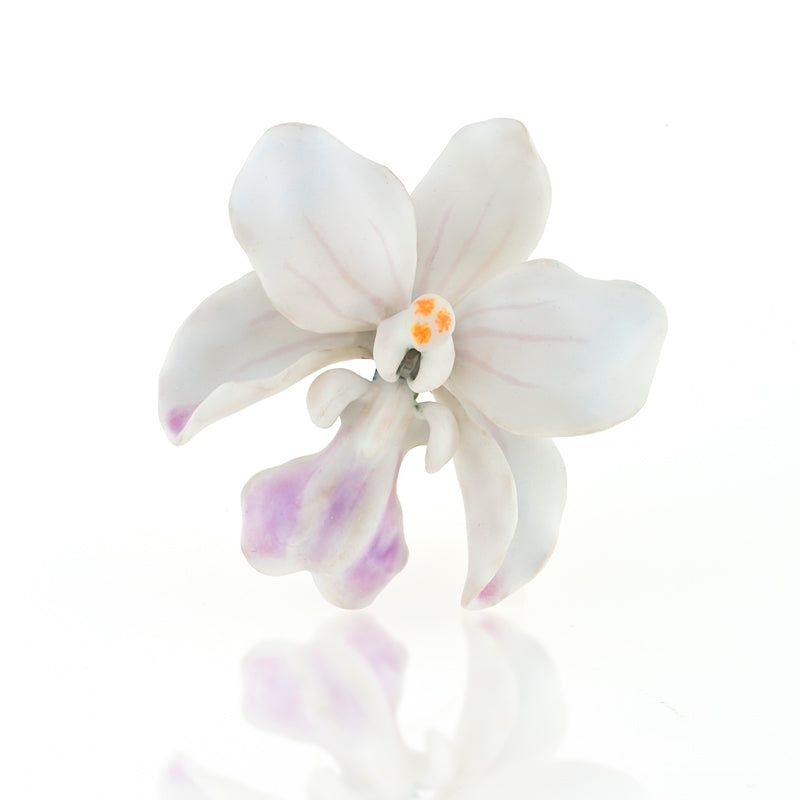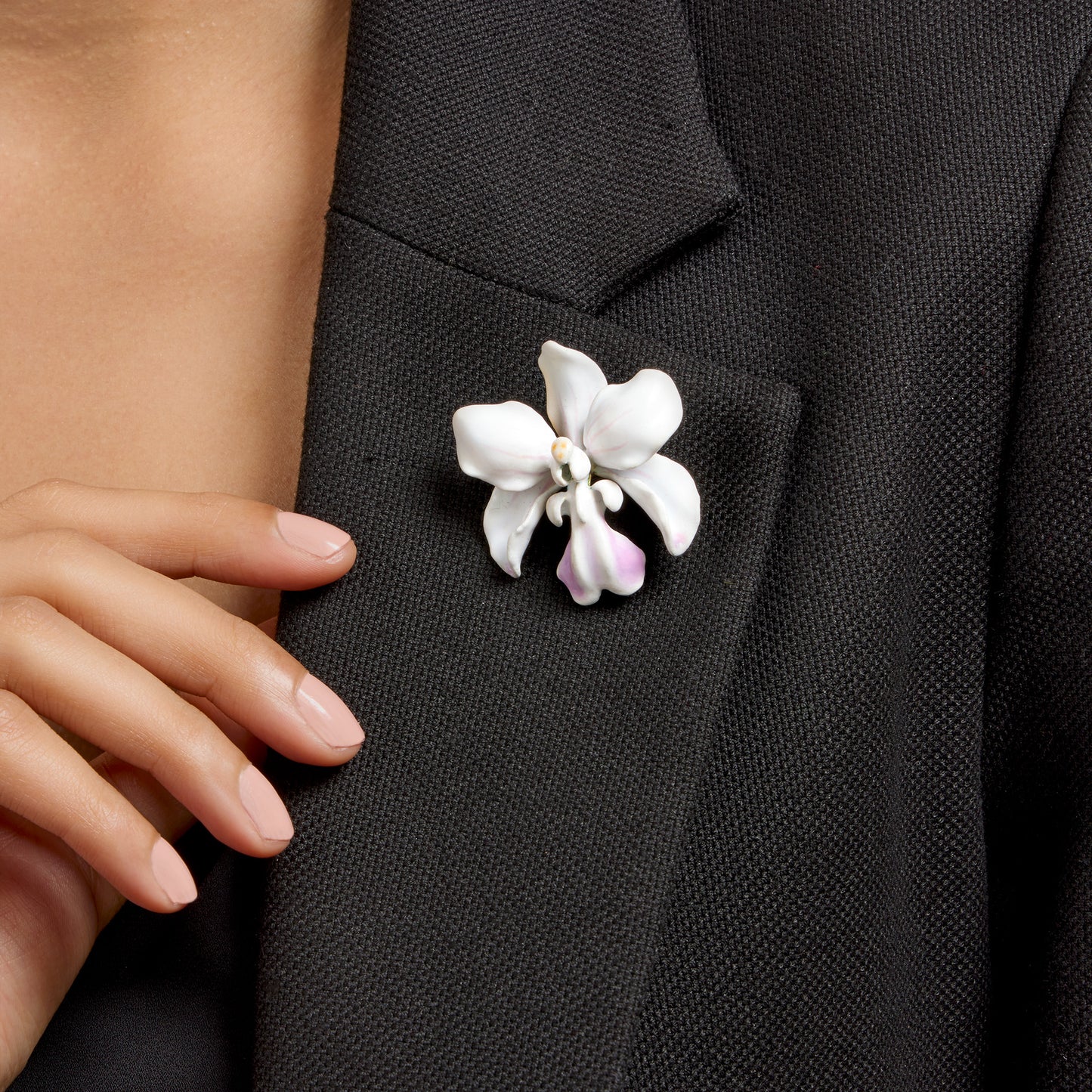In creating this as well as his larger and more elaborate orchid brooches, Paulding Farnham made use of the technique of electro-forming. Tiffany had mastered this technique in the late 1870s, when they created the "Curium Treasure" jewelry, directly electro-forming the ancient Cypriot gold which formed part of the original collection of the Metropolitan Museum in New York. These jewels based on Curium Treasure designs had secured for Tiffany the nation's first gold medal for jewelry at the Paris Exposition of 1878. Building on this success, Farnham harnessed the same technique to create twenty-four species of orchids and other flowers, first in copper. These electroforms were then used to make molds for casting in gold, after which they were enameled and set with gems. Workmen at Tiffany had access both to contemporary botanical literature and living examples of the various species with which to ensure the botanical accuracy of their refined enamels. The orchids caused a sensation at the Exposition, with Figaro praising them as "so perfect, so life-like in their grace and charm, that they give the illusion of being natural." Reporters noted that the orchid exhibit was the "most popular corner of Messrs. Tiffany's show." To satisfy continuing demand for these marvelous jewels, Farnham re-created some of the originals in versions with slight variations, and added to these at least seventeen more varieties to sell in the firm's New York and Paris stores.




















